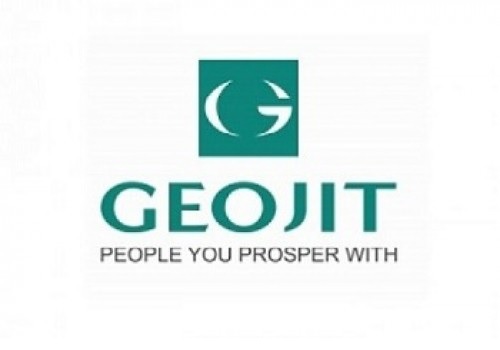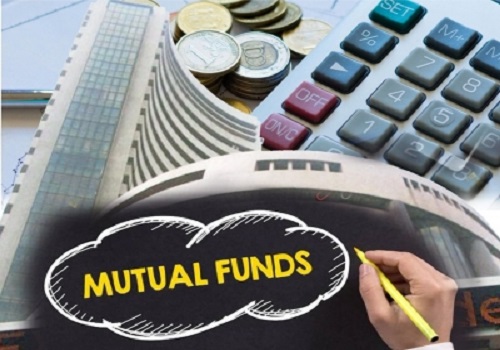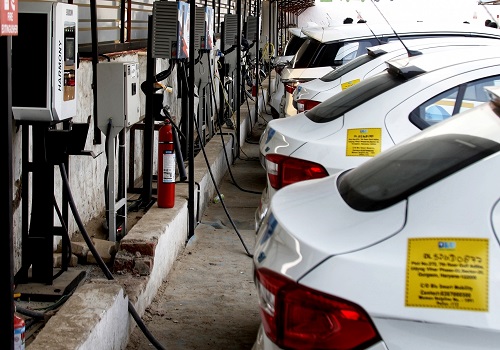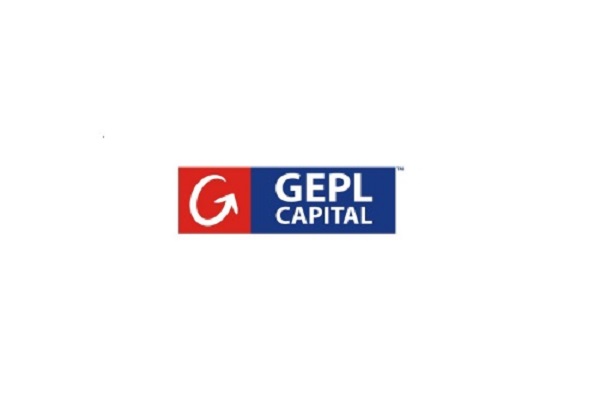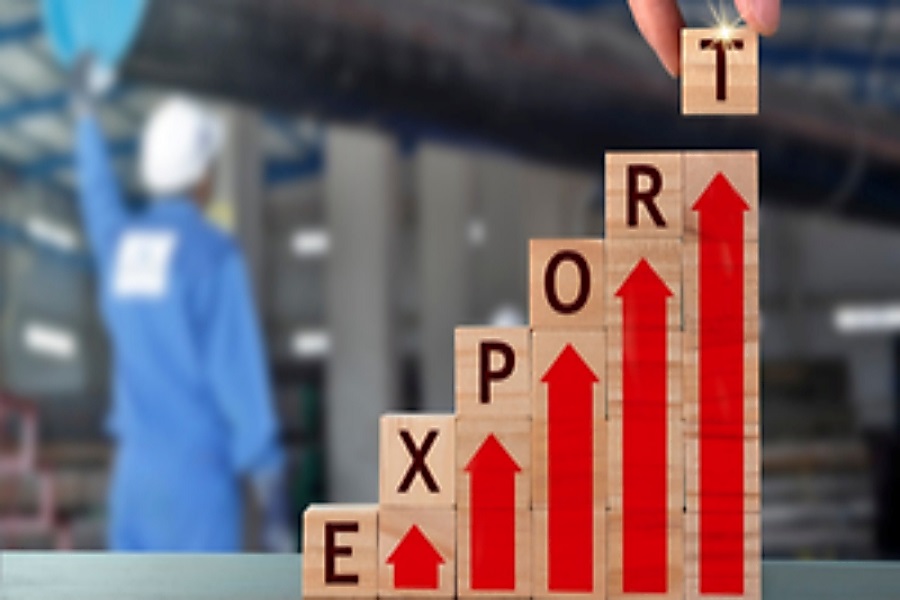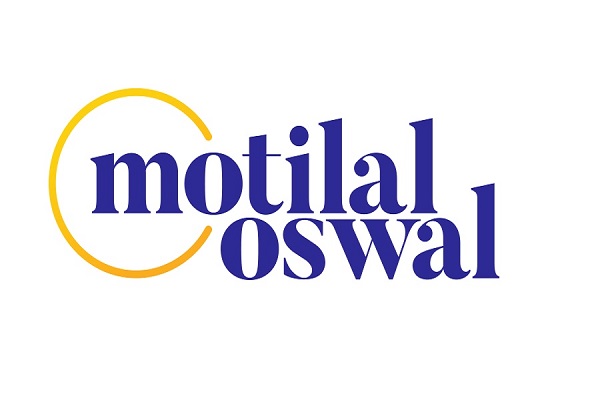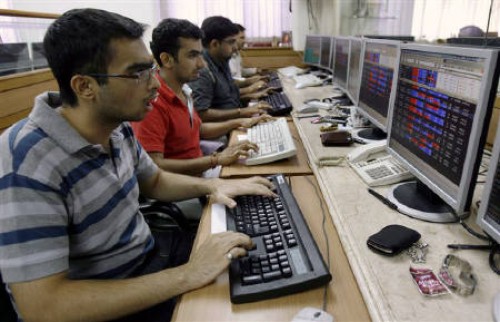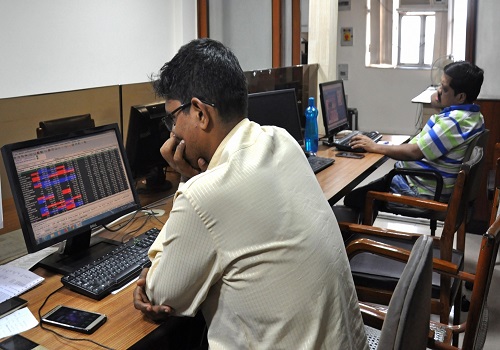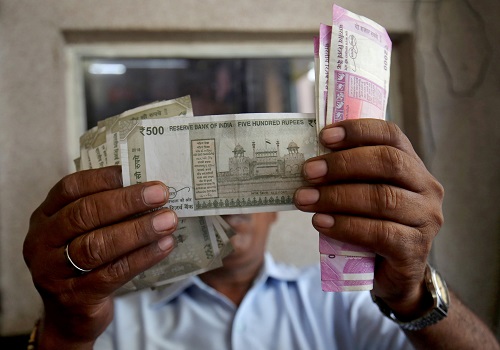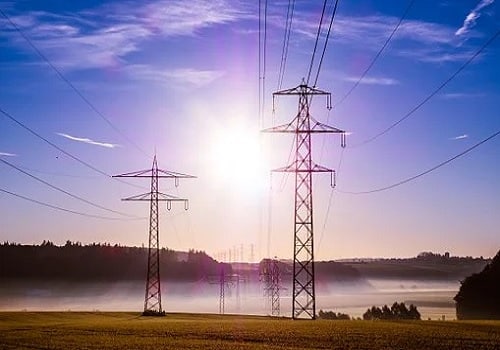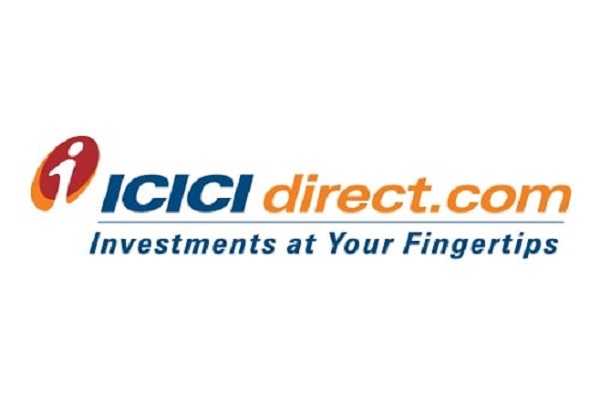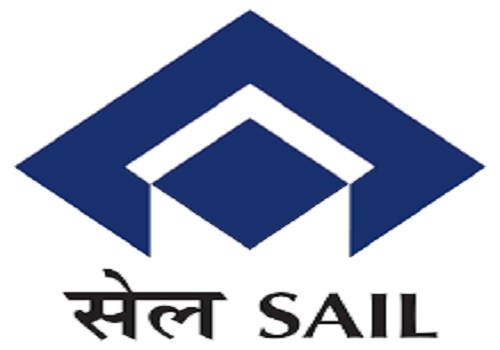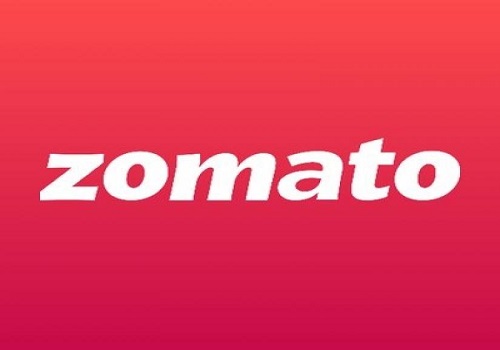Hold Steel Authority of India Ltd For the target Rs. 120 By Axis Securities Ltd

Q1 Miss Driven by Inventory De-Valuation and Higher Other Expenses
Est. Vs. Actual for Q1FY26: Adj Revenue – INLINE; Adj. EBITDA – MISS; Adj PAT – MISS
Change in Estimates YoY post Q1FY26:
FY26E/FY27E: Revenue: 0.2%/0.4%; EBITDA: -9%/-3.5%, PAT: -19%/-9%
Recommendation Rationale
• Q1 Miss Led by de-valuation of the steel Inventory: SAIL’s EBITDA (excluding rail provision), at Rs 2,595 Cr (up 17% YoY but down 7% QoQ), missed our and consensus estimate by 34%/23%. The miss was led by a true-up exercise on the valuation of finished and in-process steel stocks, as lower imported coking coal prices led to lower production costs in Q1FY26. It took a one-time true-up impact of Rs 950 Cr QoQ (Rs 1,050 Cr YoY) on this inventory in NSRs (Net sales realisation). This stock (inventory) valuation impact offset the gain of ~Rs 700 Cr QoQ in NSR led by the improvement in steel prices.
• Higher Capex intensity ahead for expansion projects: SAIL will raise its capacity to 35 MT from 20 MT currently by 2030. Tendering activities for the ISP (IISCO steel plant) will start from the end of Q3FY26 and continue in Q4FY26. The capex intensity will start rising from FY27, and it will peak around FY29. Project execution will be the key risk.
• Borrowings are down YoY, but the risk of increasing leverage remains: Total borrowings stand at Rs 28,741 Cr as of Jun’25, which has come down from Rs 29,811 Cr in Mar’25. The company is targeting to reduce it further in FY26. However, as the capex intensity picks up, maintaining the leverage ratios under control will be critical across steel cycles.
Sector Outlook: Cautious
Company Outlook & Guidance: SAIL’s Capex execution will be a key monitorable and also a key risk once its expansion Capex starts to pick up from FY27 and peaks in FY28/29. FY26 Capex guidance is unchanged at Rs 7,500 Cr (FY25 capex stood at Rs 6,221 Cr), and some portion of it will go towards the IISCO brownfield steel plant tendering and debottlenecking capex. FY26 saleable steel sales volume guidance is at 18.5 MT.
Current Valuation: 6.0x EV/EBITDA on Mar’27E EBITDA (Unchanged)
Current TP: Rs 120/share (Earlier TP: Rs 130/share)
Recommendation: We maintain our HOLD rating on the stock
Financial Performance: SAIL reported a weak set of Q1FY26 results with adjusted EBITDA missing our and consensus estimate. Revenue (excluding railway provisions) stood at Rs 25,748 Cr (up 7% YoY but down 10% QoQ), largely in line with our and consensus estimate. Steel sales volume stood at 4.55 MT (up 13% YoY but down 15% QoQ), in line with our estimate of 4.56 MT. Adjusted EBITDA (excluding Rs 173 Cr benefit from the rail provision) stood at Rs 2,595 Cr, up 17% YoY but down 7% QoQ, a 34%/23% miss vs. our and consensus estimate, mainly due to higher other expenses in the quarter. Other expenses include higher royalty charges on iron ore, along with higher overhead charges due to maintenance activities in the quarter. PAT excluding railway provisions stood at Rs 611 Cr, up 79% YoY but down 19% QoQ, missing our and consensus estimate led by EBITDA miss.
• Outlook: SAIL’s next phase of the Capex wave raises concerns as it has completed its earlier hot metal expansion plan from 14.6 MT to 25 MT after significant delays and Capex overruns. As Capex for the next phase of the expansion plan will start from FY27 onwards, leverage will be the key factor to monitor in the future. We revise our EBITDA estimates for FY26/27 downwards as we factor in Q1FY26 results.
• Valuation & Recommendation: We value the company at 6.0x Mar’27E EBITDA (unchanged) to arrive at a target price of Rs 120/share (from Rs 130/share). The TP implies a downside of 5% from the CMP. We maintain our HOLD rating on the stock.
Key Concall Highlights
• Coking coal consumption cost: In Q1FY26, blended coking coal consumption cost was at Rs 16,918/t vs. Rs 17,653/t in Q4FY25. As coking coal prices were flat in Q1FY26, its consumption cost is expected to remain flat (or marginally increase) QoQ in Q2FY26. Coking coal inventory days are at a normal level of 25-30 days at ports and 5 days at plants. Imported coal prices were corrected down to Rs 17,600/t in Q1FY26 vs. Rs 18,500/t in Q4FY25.
• NSRs likely to remain muted in Q2FY26: In Q1FY26, long prices NSR improved at Rs 54,500/t vs. Rs 53,300/t in Q4FY25. Flat prices also grew and averaged at Rs 50,400/t in Q1FY26 vs. Rs 47,300/t in Q4FY25. Blended NSR in Q1FY26 averaged at Rs 51,700/t vs. Rs 50,100/t in Q4FY25. As of Jul’25, steel prices are down vs. Q1FY26 and NSRs in Jul’25 are expected to average at Rs 51,500/t for long and at Rs 48,600/t for flat steel with blended NSR at Rs 50,000/t. In the last 1-2 weeks, prices have shown signs of improvement. Management expects that the slide in Jul’25 could be offset if the prices regain strength in Aug-Sep’25. Nevertheless, the overall prices are likely to be lower QoQ in Q2FY26.
• Inventory stock valuation impact: Drop in the imported coking coal cost in Q1FY26, led to lower production cost, due to which, the company took a one-time true up impact of Rs 950 Cr QoQ (Rs 1,050 Cr YoY) in NSRs (Net sales realisation) from the stock valuation impact taken on finished and in process steel inventory. This stock valuation impact offset the gain of ~Rs 700 Cr QoQ in NSR due to the increase in steel prices QoQ. It is currently holding 1.7 MT of saleable steel and 1.3 MT of in-process stock, which is already trued up to Q1FY26 cost levels. Hence, the impact of stock valuation will not be there in Q2FY26.
• Capex: FY26 capex target is Rs 7,500 Cr, and in Q1FY26, it spent Rs 1,642 Cr, which is more than its set target. SAIL will expand its steel capacity from the current 20 mtpa to 35 mtpa by 2030 through brownfield and greenfield expansion. Tendering activities for the ISP (IISCO steel plant) will start from the end of Q3 and in Q4FY26, and some portion of the capex has already started for the ISP’s brownfield expansion of ~0.5mt. Other plants' expansion will happen in phases, and capex will be taken up in stages. Capex will start increasing from FY27 (will be higher than FY26), and it will peak around FY29.
• Railway provisional gain: Q1FY26 revenue included a gain of Rs 174 Cr on account of the revision of provisional rail prices for FY24. No more benefit from the rail price revision is expected in FY26, as the benefit is actualised and taken in Q1FY26. For FY26, the provisional rail price is already adjusted downwards at Rs 74,000/t due to the softening of imported coal prices.
• Steel Sales volume stood at 4.55 MT (up 13% YoY but down 15% QoQ) in line with our estimate of 4.56 MT. The saleable steel sales volume includes 0.4 MT of NMDC steel sales. Sales from NMDC steel were slightly EBITDA positive for the company. It sells steel from NMDC Steel as it has a marketing agreement with the company. Blended NSR increase ex-NMDC steel sales was Rs 1,600/t QoQ in Q1FY26.
• Other highlights: Full-year sales volume guidance is at 18.5 MT (excluding NMDC sales volume). Impact of higher iron ore royalty in Q1FY26 is at Rs 173 Cr QoQ, which was reflected in higher other expenses.
Key Risks to Our Estimates and TP
• The key risk to our HOLD rating is the increase/decrease in HRC prices and the increase/decrease in coking coal prices as compared to our assumptions.
• Higher/Lower than expected sales volum
For More Axis Securities Disclaimer https://simplehai.axisdirect.in/disclaimer-home SEBI Registration number is INZ000161633
